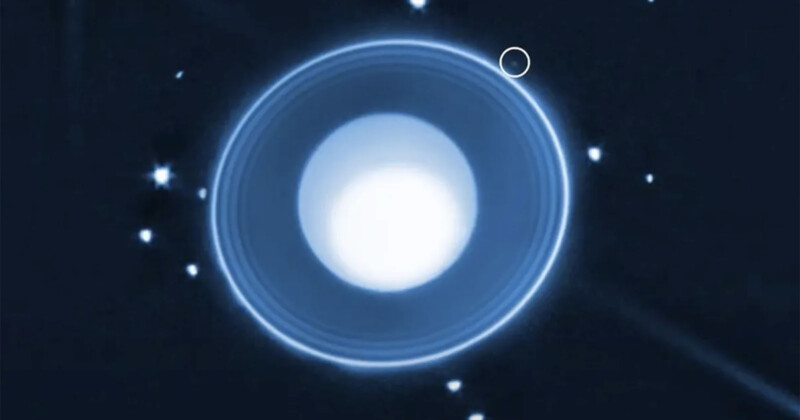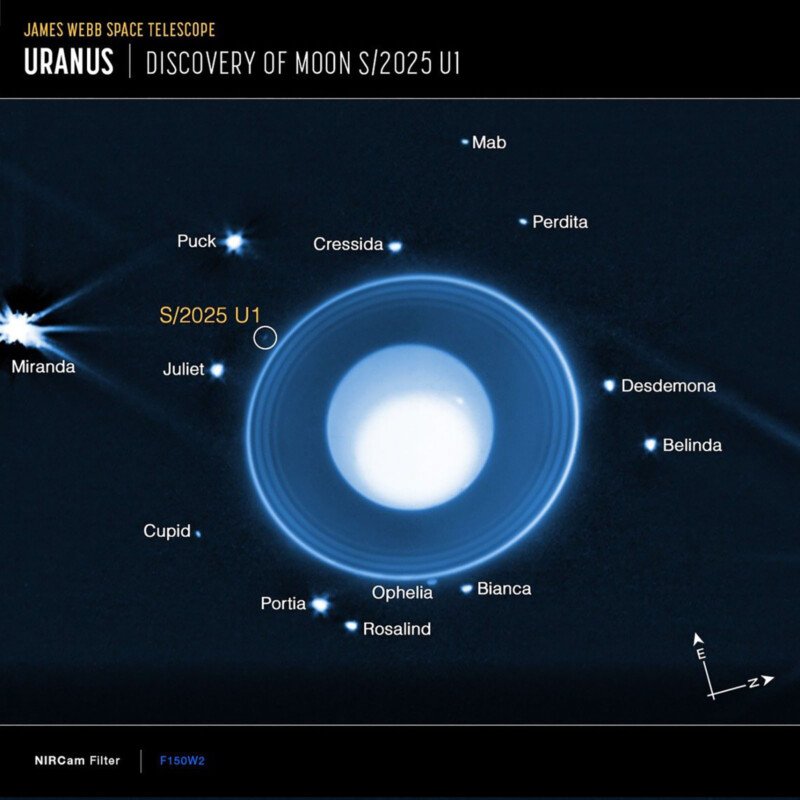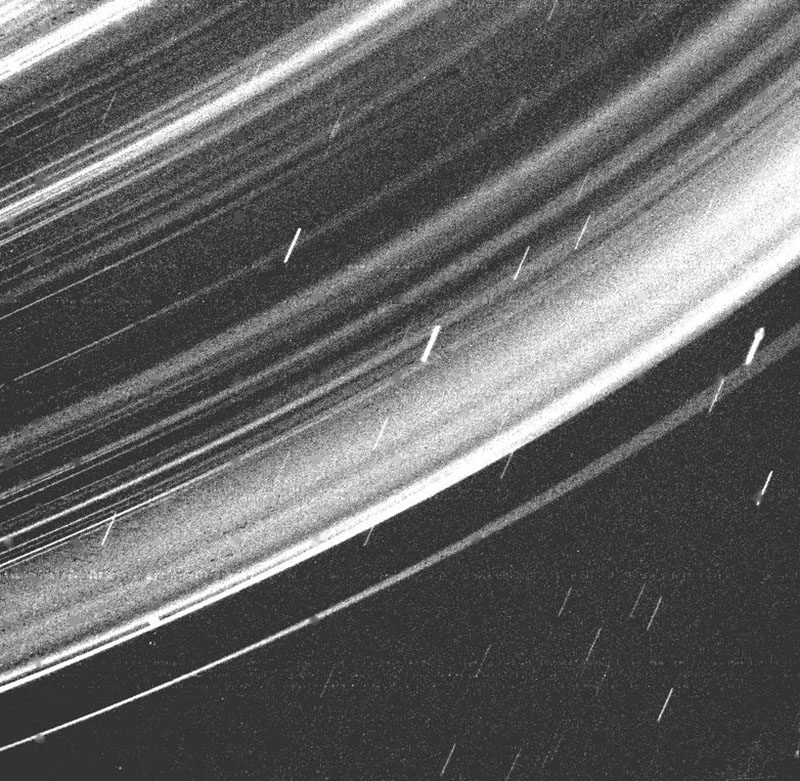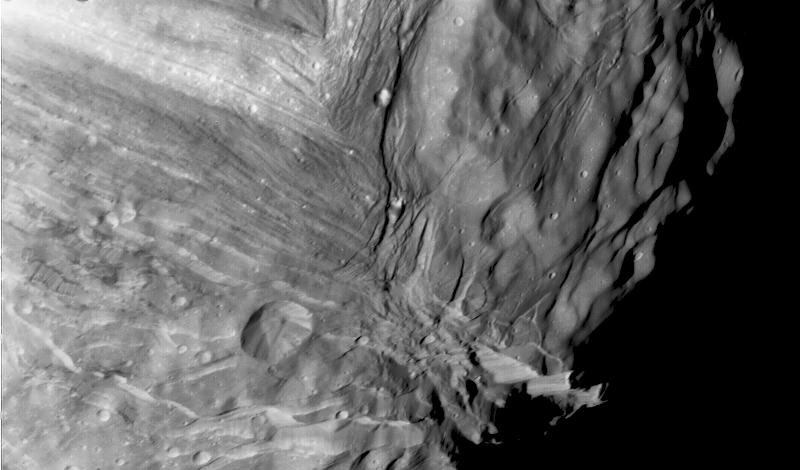Scientists Discover and Photograph New Moon Around Uranus

A team of scientists led by the Southwest Research Institute (SwRI) discovered a new moon orbiting the ice giant planet, Uranus, using the James Webb Space Telescope.
The moon, currently known as S/2025 U1 pending an official name approved by the International Astronomical Union (IAU), is 29th discovered satellite orbiting Uranus and the 14th member of “the intricate system of small moons orbiting inward of the largest moons Miranda, Ariel, Umbriel, Titania, and Oberon,” NASA explains. As NASA notes, all of Uranus’ moons are named for characters written by Shakespeare and Alexander Pope.
S/2025 U1 is about 35,000 miles (56,000 kilometers) from Uranus’ center, and orbits the planet’s “equatorial plane between the orbits of Ophelia (which is just outside of Uranus’ main ring system) and Bianca,” says Maryame El Moutamid, a lead scientist at SwRI’s Solar System Science and Exploration Division in Colorado.

“No other planet has as many small inner moons as Uranus, and their complex inter-relationships with the rings hint at a chaotic history that blurs the boundary between a ring system and a system of moons,” says Matthew Tiscareno of the SETI Institute in Mountain View, California. “Moreover, the new moon is smaller and much fainter than the smallest of the previously known inner moons, making it likely that even more complexity remains to be discovered.”
“This object was spotted in a series of 10 40-minute long-exposure images captured by the Near-Infrared Camera (NIRCam),” El Moutamid explains. “It’s a small moon but a significant discovery, which is something that even NASA’s Voyager 2 spacecraft didn’t see during its flyby nearly 40 years ago.”



Voyager 2 remains the only spacecraft ever to explore Uranus. In January 1986, as the spacecraft flew past Uranus, it captured photos and took measurements of the icy planet using 11 onboard instruments. Because of Uranus’ relative dimness, scientists used upgraded ground-based tracking antennae and increased Voyager 2’s sensitivity to capture longer, brighter exposures. Voyager 2 discovered 10 moons orbiting Uranus during its explorations.
The James Webb Space Telescope’s Near Infrared Camera (NIRCam) can capture exposures as long as nearly three hours, which helps the telescope detect extremely faint objects. As shown in the images showing the moon S/2025 U1, the newly discovered satellite fits the bill of a very dim celestial object. The photos were captured using NIRCam’s wide band F150W2 filter, which allows infrared wavelengths from 1.0 to 2.4 microns to pass through and reach the image sensor.
“The NIRCam instrument’s high resolution and infrared sensitivity make it especially adept at detecting faint, distant objects that were beyond the reach of previous observatories,” El Moutamid adds.
“Looking forward, the discovery of this moon underscores how modern astronomy continues to build upon the legacy of missions like Voyager 2, which flew past Uranus on Jan. 24, 1986, and gave humanity its first close-up look at this mysterious world. Now, nearly four decades later, the James Webb Space Telescope is pushing that frontier even farther,” the scientist concludes.
Image credits: NASA, ESA, CSA, STScI, M. El Moutamid (SwRI), M. Hedman (University of Idaho). The research discussed in this article is in progress and has not been peer-reviewed.